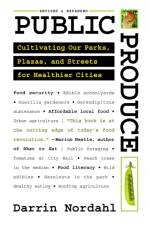av Darrin Nordahl
309
Public Produce makes a uniquely contemporary case not for central governmintervention, but for local governminvolvemin shaping food policy. In what Darrin Nordahl calls "e;municipal agriculture,"e; elected officials, municipal planners, local policymakers, and public space designers are turning to the abundance of land under public control (parks, plazas, streets, city squares, parking lots, as well as the grounds around libraries, schools, governmoffices, and even jails) to grow food.Public agencies at one time were at best indifferabout, or at worst dismissive of, food production in the city. Today, public officials recognize that food insecurity is affecting everyone, not just the inner-city poor, and that policies seeking to restructure the production and distribution of food to the tens of millions of people living in cities have immediate benefits to community-wide health and prosperity.This book profiles urban food growing efforts, illustrating that there is both a need and a desire to supplemour existing food production methods outside the city with opportunities inside the city. Each of these efforts works in concert to make fresh produce more available to the public. But each does more too: reinforcing a sense of place and building community; nourishing the needy and providing economic assistance to entrepreneurs; promoting food literacy and good health; and allowing for "e;serendipitous sustenance."e; There is much to be gained, Nordahl writes, in adding a bit of agrarianism into our urbanism.


